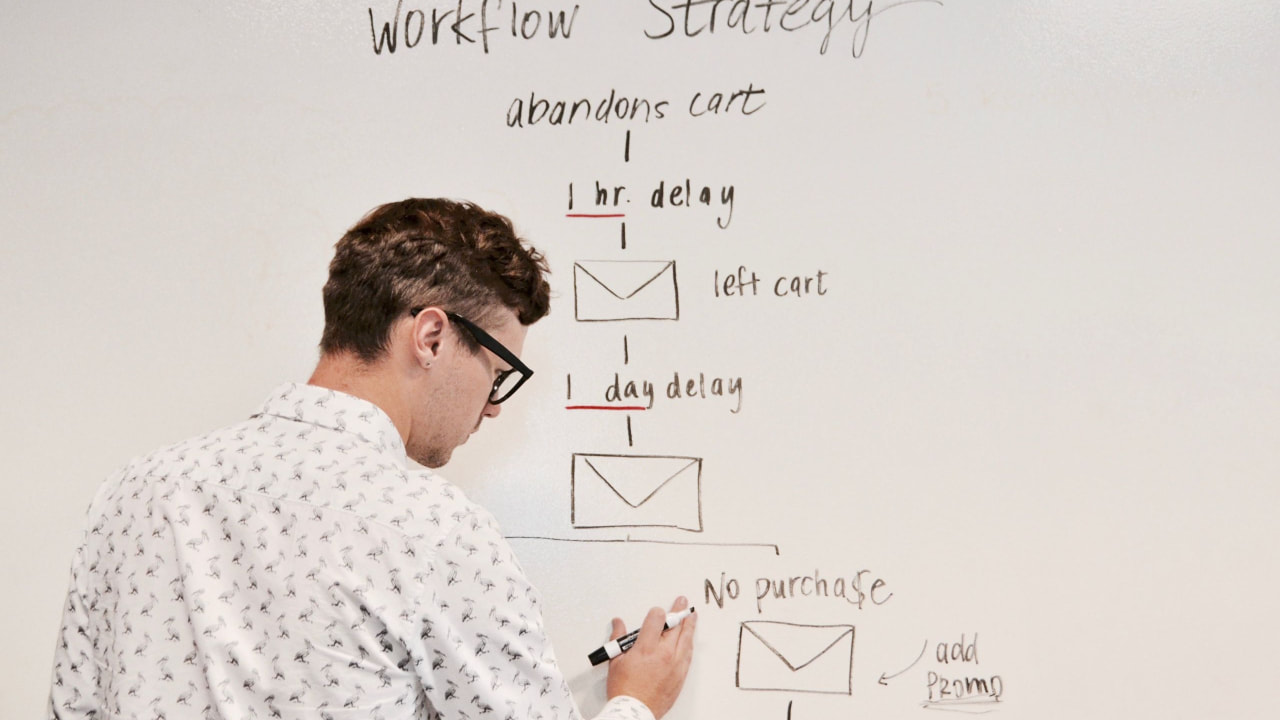|
In this blog post, we discuss the importance of lead generation strategies. If you have any questions or need any help with your lead generation strategy then get in touch. How To Generate Leads Using Lead Generation StrategiesLead generation is frequently misunderstood and under-valued when it comes to growing a business. The term “lead generation” doesn’t help as it’s not clear to many business owners and start-ups as to what exactly it means. In this blog post, we go through what a lead generation strategy is, and how you can use lead generation to increase your sales. If you would like help with your lead generation then get in touch for a free consultation to see how we can help. What Is a Lead Generation Strategy?A lead generation strategy is a marketing and sales technique used to generate leads for a product or service. It’s based on the premise that to get sales, you first need to have a number of prospects (also known as leads) that will buy from you. Finding prospects is, as the phrase goes “generating leads”. There are varying levels of leads such as cold leads (unlikely to buy or not enough information to know their situation), warm leads and hot leads (ready to buy or are certainly expressing a high level of interest in what you offer). A lead generation strategy involves a plan (and one or more sales and marketing campaigns) to generate leads. Lead generation strategies are often effective because they target people who want what you have but don't know about it yet. Lead Generation Statistics and Fast FactsBefore we get into more detail on how to generate leads, here are some quick facts to consider: - In the United States alone, there are over 50 billion dollars spent annually on lead generation. - The average cost of a qualified lead is $25. - The average conversion rate for a qualified lead is 10%. - Lead generation can be done through many different sources, such as social media and email marketing campaigns. Qualifying Your LeadsA qualified lead is one that you believe is looking to potentially buy from you. If you have 200 email addresses of people who could buy your services but no other information then these are cold - or unqualified leads. If, however, you establish contact with those people in whatever way, you can find out how serious they are about buying. Some of those leads can be removed from your list, while others can be considered as qualified leads. A lead is qualified when they meet your criteria. Make sure you have a set list of qualifications before generating leads because it will be easier to turn them down if they don't qualify than after you have invested time and effort into them. Using PPC to Generate LeadsLead generation strategies are the most effective way for companies to gain new business. There are many different ways that a company can generate leads, but one of the best is by using Pay Per Click (PPC). PPC, also known as pay-per-click advertising is a form of internet marketing that involves the advertiser paying for each click on their ad by potential. A Google Ads campaign, for example, can be used to promote a product or service when someone is actively searching for that service. A hotel in Manchester, for example, might set up a Google Ads campaign so that the advert for the hotel appears when someone searches for “hotels in Manchester”. Using Email to Generate LeadsEmail Marketing can play a critical role in the lead generation process. It can either be used to generate leads or by nurturing prospects and building up the relationship with them so that they will go from being a lead to becoming a paying customer. Lead Generation Strategies can be used to generate leads for a variety of businesses, and they are especially useful when you're just starting out because it's one of the cheapest ways to get customers quickly. Different channels for generating leadsLeads can be generated by many different channels, including sales leads from trade shows and other events, advertising campaigns (such as PPC campaigns) or public relations efforts that attract large numbers of potential customers, and even from social media marketing. Leads can also be generated through methods such as cold calling and direct mail. Cold-calling can be difficult for many businesses for various reasons and although it’s considered by many to be outdated compared to digital marketing, it can still be effective for many industries. How Much Does Lead Generation Cost?Lead generation costs are based on the type of lead that is being generated, how many leads are desired and what methods will be employed to generate them. For example, email marketing can cost as little as £1 per email and the price of each lead will depend on various factors such as the type of products or services, the industry and the channels that are used to reach the target audience. There’s no definitive answer to the question “How much does lead generation cost?”, but if you would like to know more about measuring Return on Investment (ROI) and deciding on the most effective lead generation campaign, then get in touch. We would be happy to help. The integrated approachThe ultimate lead generation strategy is one that’s tried and tested to get results and is set up as a process that’s automated as much as possible. To achieve this requires an understanding of what will work most effectively as well as an integration of marketing tools such as email marketing, landing pages for lead generation and a follow-up process for contacting hot leads.
At Think Twice Marketing, we work with businesses to set up their lead generation process. To find out more and to grab your free consultation, get in touch today. In this blog post, we discuss what an autoresponder is and how you can use it in your marketing. For more information about email marketing and autoresponders, contact us today. Automating marketing with autorespondersAutomation can play an important part in the success of any growing business. The less time you devote to doing small redundant tasks, the more time you will have to devote to strategic and business development activities that require your skills and expertise. Putting an online business on autopilot is fairly easy to do, and much of it can be done by simply using autoresponders to automate simple tasks for you. What is an autoresponder?An autoresponder is software that’s used to automatically respond to customer enquiries. It can be used to set up a series of pre-determined responses, or it can be programmed to respond in a more human-like manner. This software usually either has the ability to send out automated emails or is integrated with email marketing software. Autoresponders are mostly used in marketing for marketing campaigns, or customer support in order to handle large volumes of support enquiries. In this blog post, we are focusing primarily on how an autoresponder can be used to achieve better results in your marketing. Autoresponders in eCommerceIf you run an eCommerce business then an autoresponder is a great way to help nurture the prospect and, if necessary, nudge them back toward making a purchase. Here are some examples of how an autoresponder can be used in eCommerce: Shopping cart abandonment: This is a common issue in online eCommerce. If a website visitor has entered their email address (and some other details) but they haven’t made a purchase on what’s in their basket or shopping cart then you can use an autoresponder to remind them to check out. You can also couple this with a special offer to prompt them further. You viewed this campaign: Similar to the Shopping cart abandonment campaign, you can send an email promoting a product that someone has viewed (or alternatives). If the user is signed in and views a product, you can set up an autoresponder to say “hey, great choice. We notice you didn’t add it to your basket so here’s a button to do that in case you forgot”. Short blast and lead generation campaignsTwo other great ways to use autoresponders are in short one-off campaigns and in lead generation campaigns. A short blast campaign comprises of a series of emails over a short period of time. A business offering a productivity app, for example, could offer a 5-day training on how to improve business productivity with a new email being sent out on a daily basis. When a prospect signs up, they will receive the various educational emails in the order and according to the timing set up in the autoresponder. With a lead generation campaign, a business can offer a free eBook or some other form of “lead magnet”. When a prospect enters their email address on the website to receive the free eBook, they will receive a copy of the book by email, followed by a series of emails over time with further tips, advice and offers. A short blast campaign and Lead generation campaign can be the same thing depending on what you are offering and how the campaign is planned out. Using Autoresponders wiselyAutoresponders are great for businesses that want to grow, but they must be used with caution. Promoting products for sale is one of the most popular uses of autoresponders in online marketing but it can annoy or alienate potential customers if it isn’t done correctly. Sending too many emails or being too promotional is more likely to prompt the reader to hit the subscribe rather than the buy button. What Autoresponder should you use?There are many Autoresponder services available that can be found by searching on Google. Many Autoresponder services offer a free limited service but make sure to check out the features first as well as the upgrade pricing. Once you start using an autoresponder, it can be a lot of extra work if you decide later on to move your data and processes over to a different solution. Aweber, MailChimp and GetResponse are just a few examples of apps that offer autoresponder functionality. A fuller list of email marketing solutions, as well as tips for setting up an autoresponder, are included in How to create a successful email marketing campaign. Need help with your email marketing?If you need help with your email marketing and setting up an autoresponder, get in touch. We would be delighted to have a quick chat with you to understand your requirements and to see if we can help.
Call us today. |
written byThe opinions in these blog posts are those of marketing expert and book author Darren Hignett. Categories
All
Archives
October 2022
|
|
Open 9 am - 5 pm
Tel: 07769 331 247 |





 RSS Feed
RSS Feed